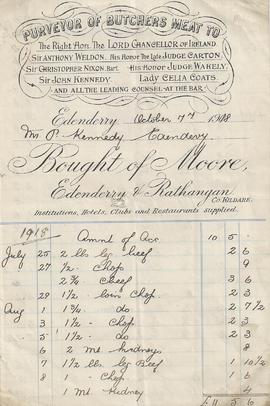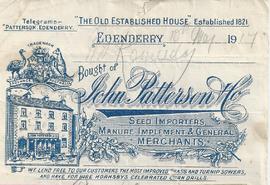King’s County Infirmary was established under King George III’s reign with the passing of the Irish County Infirmaries Act of 1765. This act enabled the creation of infirmaries in thirty Irish counties. In an amending act from 1768, King’s County Infirmary was moved from Philipstown (Daingean) to Tullamore, the new county town. During the redevelopment of Tullamore town by the Earl of Charleville, a new infirmary building was erected in 1788 on Church Street and was further extended in 1812.
The County Infirmaries Act was enacted to provide healthcare to the poor which fulfilled the eighteenth century philanthropic ideals of the landed gentry who supported these institutions through donations and subscriptions. King’s County Infirmary was supported by an income comprising of parliamentary funds, grand jury presentments, governor subscriptions, donations, and patient fees. The infirmary was managed by a Board of Governors who paid subscriptions for their position on the board. Governors had absolute control over the infirmary including staff appointments and patient admissions. To gain access to the infirmary, Governors issued tickets of admission which were most likely given to their employees, tenants, and servants. The governors who supported the hospital were made up of local gentry and landowners such as the Earl of Rosse, Lord Digby and prominent businessowners such as the Goodbody family.
During the War of Independence, King’s County Infirmary came under the jurisdiction of the new Sinn Féin majority council, now renamed Offaly County Council. On the 21st of January 1921, the secretary to Offaly County Council attended a meeting of the board to inform them of the closure of the infirmary. It was to be closed under the Offaly amalgamation scheme whereby the workhouse hospital would become the new County Hospital. The board pleaded with the council to delay the closure in order to settle the affairs of the hospital in relation to critical patients and financial matters. The hospital eventually closed in August 1921 after it was reported by the surgeon and registrar to the board, that the bedding and beds were carried out of the infirmary by unknown persons suspected to be under orders of the county council.
Following its closure, King’s County Infirmary accommodated the civil guards and then housed the county library until 1977. The façade of the original King’s County Infirmary can still be seen on Church Street, Tullamore, which has now been repurposed into apartments.


